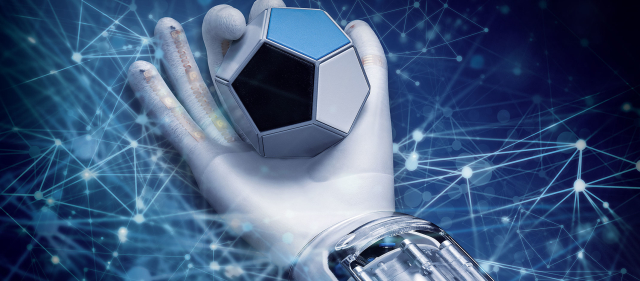Festo develops a robot hand that learns through trial and error
Festo revealed its BionicSoftHand, a soft-to-the-touch robot hand that learns from virtual trial and error without actually executing any mistakes.
On Thursday, German automation company Festo gave the world a peek at the BionicSoftHand, whose fingers are filled with air and bones are made of knitted textiles.

The BionicSoftHand learns virtually. Image: Festo
Lined with flexible circuit boards, the fingers are equipped with inertial and tactile force sensors, while the palm houses the motherboard. This tech is how the hand communicates, yet remains soft.
The hand was designed to be safe for use around humans, and like us, it learns from trial and error.
The engineers give the BionicSoftHand a goal to accomplish — in this case, to rotate a 12-sided cube — which is made possible by a depth-sensing camera and artificial intelligence.
A digital simulation of the hand ensures that the physical one never makes a real mistake. Instead, the virtual hand makes mistakes digitally until the goal is accomplished correctly.
The successful virtual actions are then sent to the BionicSoftHand and all other existing units and the cube is rotated. An entire fleet of existing robotic hands could thus potentially learn from each other’s accomplishments.
According to Festo, the BionicSoftHand is “therefore predestined for applications in the collaborative working spaces of tomorrow’s factories”. NVG
RELATED STORIES:
Increasingly human-like robots spark fascination and fear
Robots walk, talk, brew beer and take over CES tech show